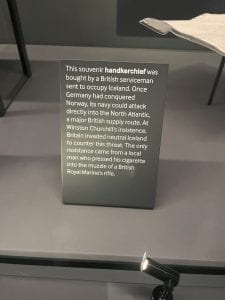As the main perpetrators of WWII, Germans have very little to commemorate, but that doesn’t mean they don’t remember. Throughout our time in Berlin, we observed much that remained relatively untouched from those years. Five minutes from our hotel stand the remnants of one of the busiest train stations in the world. The German Reichstag building, currently home of nation’s parliament, still has bullet holes visible from the notorious Battle of Berlin. Without even knowing it, passersby bear witness to German history. Germany’s recollection of World War II is exhibited through historical preservation.
New installations to recall the past have been erected as well. For example, artworks scattered throughout the Reichstag remember the excesses of the Nazi party’s history. One piece, designed by French artist Christian Bolkanski, depicts the names of all the members of German parliament. Located in one of the building’s hallways, the piece takes the

Black box signifying no free elections throughout the country
visitor through a tunnel composed of boxes, each featuring the name of a parliament member. The halfway mark displays the members of the Nazi Party and a black box signifying the absence of free elections within the country from 1933-1945. As I began walking through “Archive of German Members of Parliament,” I expected this period of German history to be absent, but its presence in many ways was the point. This art piece beautifully summarizes Germany’s understanding of the war. There is a need to remember the past, but sometimes that remembrance is equivalent to a name on a box.






